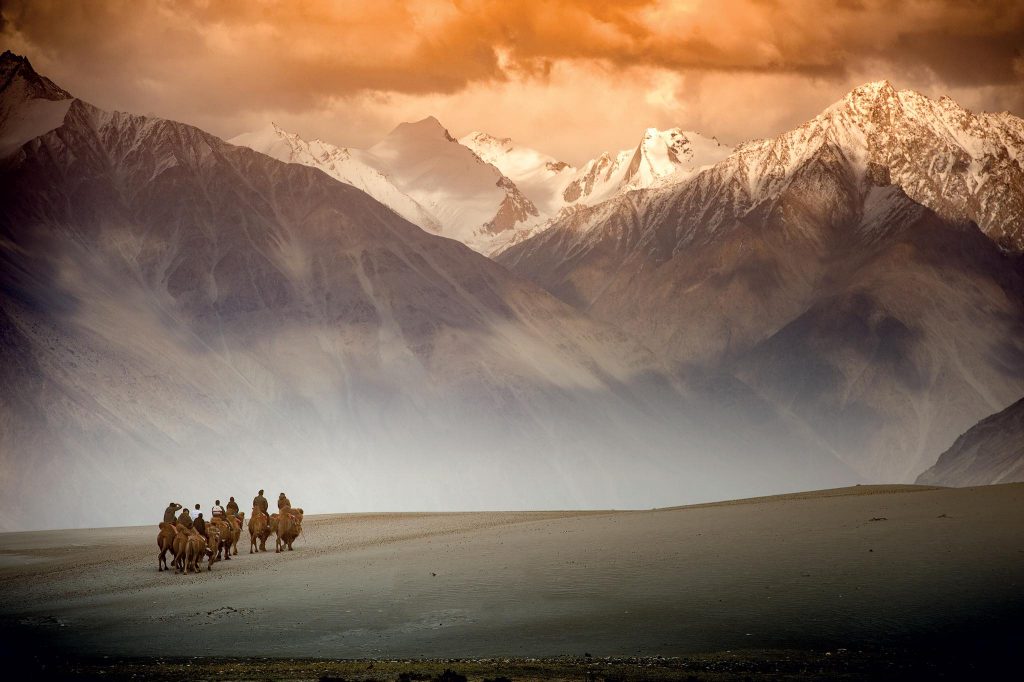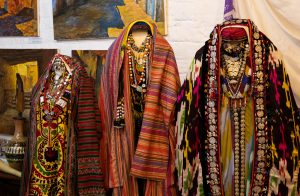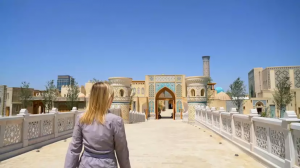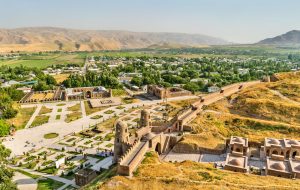Modern camel riders travel through the Nubra Valley, India, along the route that once linked southern Asia to Rome along the Silk Road. Credits: SKAMAN/GETTY IMAGES
Trading Silk for Horses: The Surprisingly Simple Origins of the Silk Road
Trade linked China and the Roman world along the Silk Road, fostering not only commerce but a robust exchange of wisdom and beliefs.
Soft, strong, and shimmering—silk was first cultivated in China, perhaps as early as the mid-third millennium B.C. The art of turning the cocoons of the silkworm moth (Bombyx mori) was, according to legend, discovered by the wife of the Yellow Emperor, a mythical forebear of the tribe that later founded China’s first dynasty, the Xia, in circa 2070 B.C. While she was drinking tea in the shade of a mulberry bush, a cocoon fell into her cup. Instead of throwing it away, she examined it and discovered that pulling on a strand could completely unravel it.
Traditionally, silk production was entrusted to Chinese women and carefully guarded as a state secret. Revealing the confidential methods of sericulture was punishable by death. Centuries later, it would be these silken threads that would weave together a vast trade network, linking the lands of China to Rome.
In the 19th century German geographer Ferdinand von Richthofen looked for a term to describe the trade routes that shuttled silks and other luxury goods between the Far East and the Mediterranean from the first century B.C. until the Middle Ages. It seemed appropriate to name it for the item most associated with Eastern opulence, and Richthofen’s term, “Silk Road,” has stuck ever since.
Sights Along The Silk Road
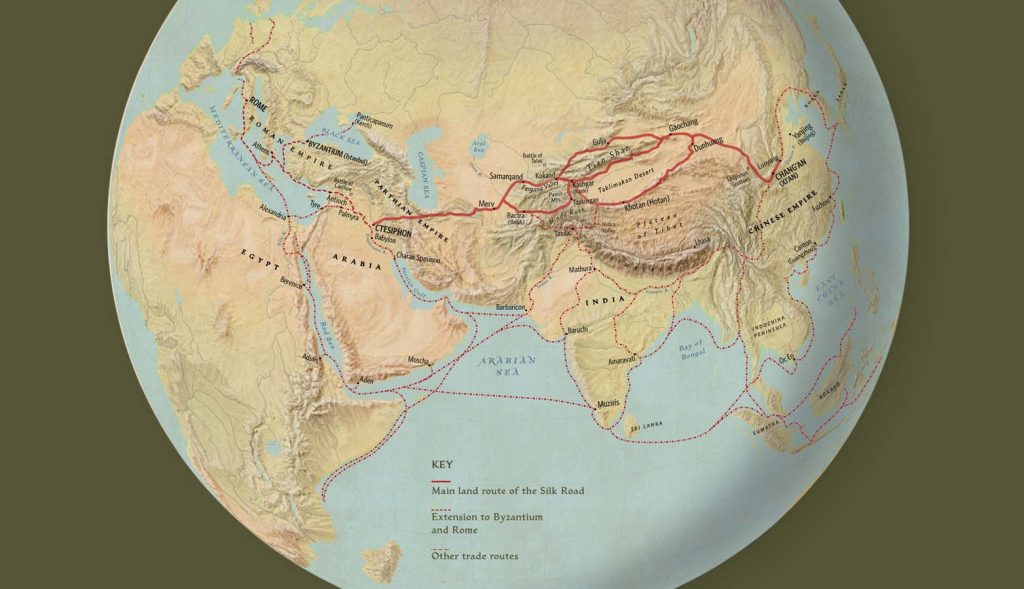
A tangle of trade routes linked the Far East and Europe, connecting at various points with other routes taking trade to and from India. The unifying name “Silk Road” is attributed to a 19th-century German geographer Ferdinand von Richthofen. Over time, the name stuck becoming a catchall for the mesh of trade routes across Central Asia. EOSGIS.COM
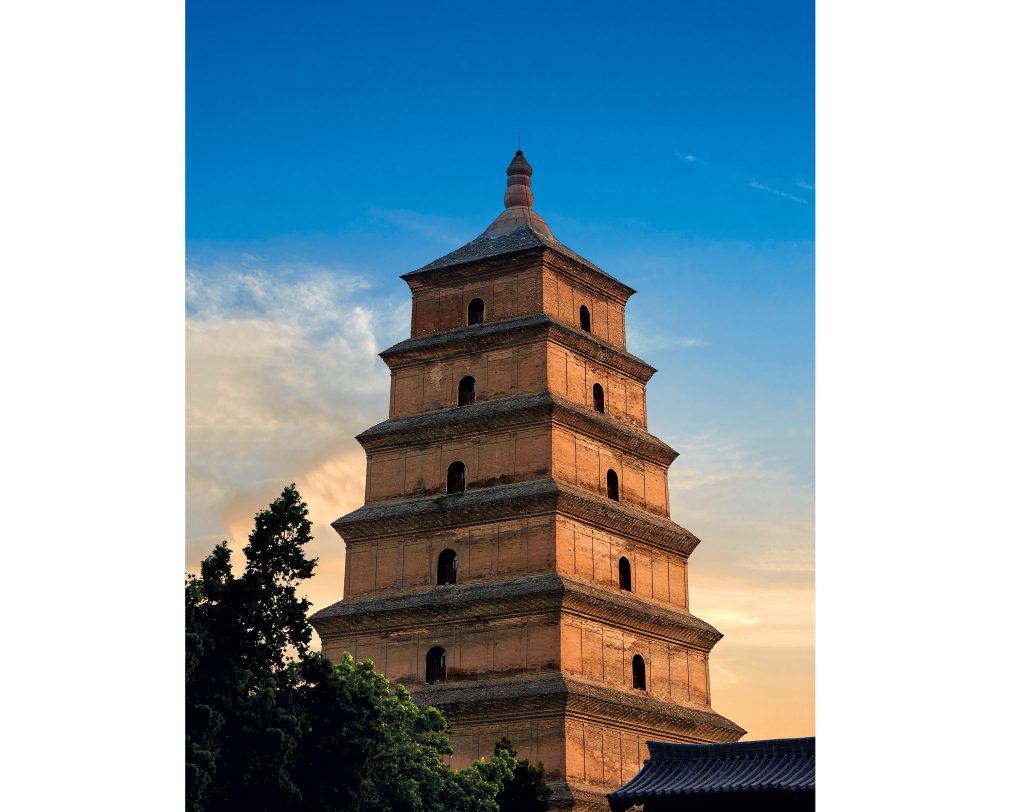
Famed for its pleasure gardens, Chang’an was the eastern terminus of the Silk Road. Under the Tang dynasty, it became one of the biggest cities in the world, and a major importer of Western luxuries. The Buddhist Great Wild Goose Pagoda was built there in the mid-seventh century, constructed at a time of renewed trade with the West under China’s vibrant Tang dynasty. EASTPHOTO/AGE FOTOSTOCK
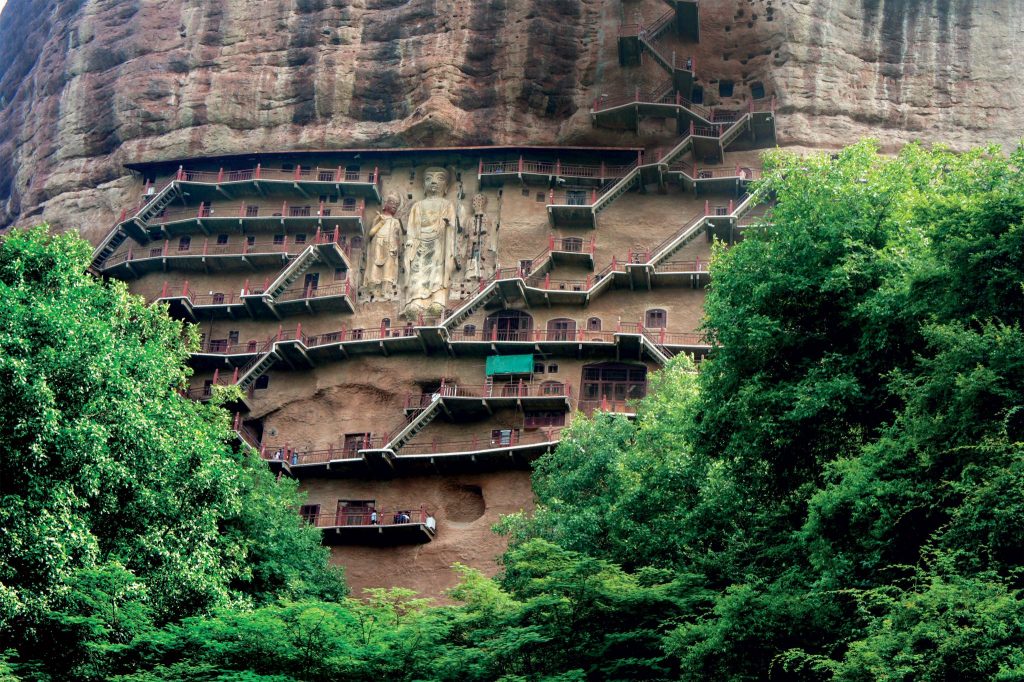
Caves carved by Buddhist monks can be found in several places along the Chinese section of the Silk Road. The fourth and fifth century Maijishan Grottoes, near Gansu, consist of 194 caves cut into the sheer cliff face. TOP PHOTO GROUP/AGE FOTOSTOCK

Ctesiphon, located in modern-day Iraq, was the capital of the Parthian Empire in the first century B.C., and later of the Sasanian Empire. The palace of Taq Kisra, photographed in 1916, was built during the Sasanian era. UNDERWOOD AND UNDERWOOD

Meaning “stone tower” in the Turkic language, some scholars identify the Chinese city of Taxkorgan as the place Ptolemy fixed as the halfway point along the Silk Road. The image shows the 14th-century ruins of the city’s fortress, with the Pamir Mountains rising behind. PANORAMA STOCK/AGE FOTOSTOCK
Beyond the Wall
The Chinese did not make an effort to sell silk outside of their country until circumstances forced them to do so. At the end of the third century B.C., Emperor Qin Shi Huang Di (r. 221-210 B.C.) began consolidating forts in the north, the first phase of what would eventually become the Great Wall. His aim was to halt the incursions of the nomadic Xiongnu tribes. Over time, the wall proved to be insufficient on its own; in 138 B.C. Han emperor Wudi tried another approach. He attempted an alliance with another Central Asian tribe, the Yuezhi, enemies of the Xiongnu.
Zhang Qian, a young officer of the emperor’s palace guard, was appointed as the leader of the diplomatic mission. In order to reach the Yuezhi, he had to enter enemy territory to the northwest and was captured by Xiongnu forces. After a long imprisonment, he returned to China 13 years later, his mission to the Yuezhi a failure.
Origins of The Silk Road
138 B.C. – Zhang Qian rides west to form an alliance with the Yuezhi to defend China. His mission fails, but he discovers wild horses in the Fergana Valley, which he believes can be traded for silk.
102 B.C. – The Han dynasty now controls trading routes northwest of China to the Fergana Valley. Its customs point at Dunhuang ensures that silk cocoons are not smuggled out of China.
A.D. 550 – Following the third-century collapse of the Han dynasty, Christian monks manage to sneak cocoons out of China to produce silk in Europe.
From A.D. 618 – Renewed confidence and unity under China’s new Tang dynasty spurs demand for luxury goods, boosting two-way traffic along the Silk Road between China and Europe.
In this and other subsequent adventures, however, Zhang Qian learned a great deal about the mysterious lands to the west: India and the Parthian Empire, whose lands correspond to northeastern regions in Iran today. In the Fergana Valley, north of the Hindu Kush, he observed horses much larger than those in China. He recognized that these beasts would be valuable military additions to Chinese forces. While in Parthia, he also made contact with the remnants of the Hellenist culture established by Alexander the Great in Central Asia, marking the first major contact between China and Indo-European society. Most important of all, he identified a widespread desire for Chinese silk.
Having absorbed Zhang Qian’s reports after his return, the Han dynasty saw the advantages of westward trade, especially the prospect of obtaining the superior Fergana horses. Officials knew they could trade silk for these horses. In time this trade would plug China into the lucrative markets of the West, including the booming Roman world.
The route did not arise out of a vacuum. In the fifth century B.C. the sprawling Persian Empire had already improved travel through western Asia, while Alexander the Great’s eastward expansion helped lay the foundations of trans-Asian trade. Even so, Zhang Qian’s remarkable adventures were important early steps in creating the Silk Road.
Heavenly Horses
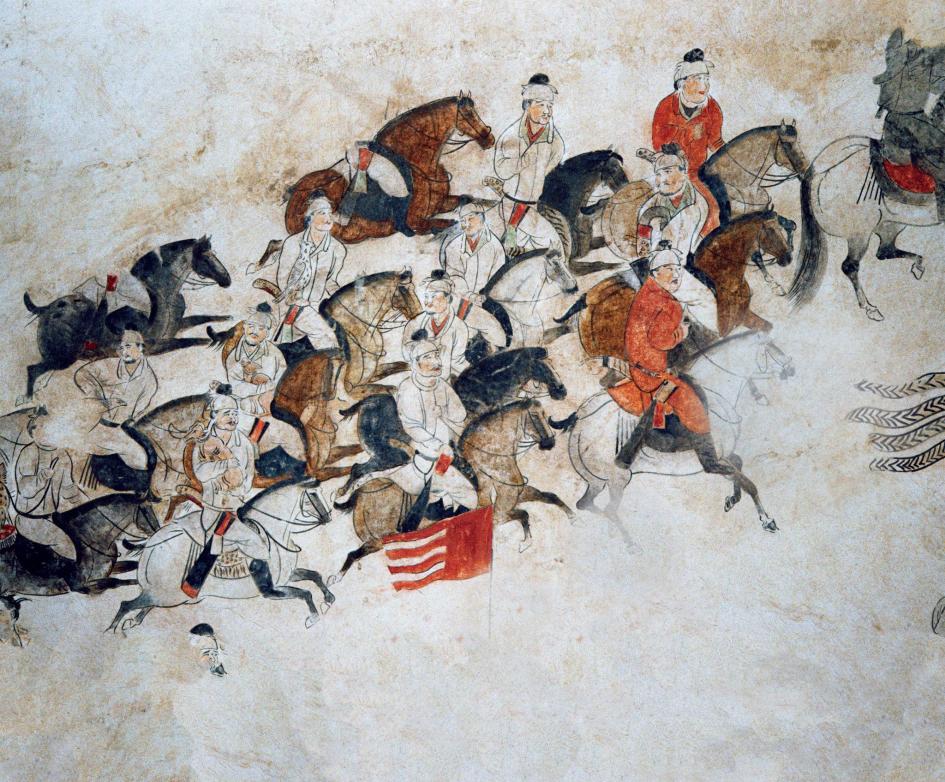
Hunting scene on a seventh-to eighth-century mural from the Qianling Mausoleum near Xi’an. SUPERSTOCK/AGE FOTOSTOCK
The explorer Zhang Qian had told Emperor Wudi that there was a special breed of horses of great stamina in the Fergana Valley, which would equip China with a formidable cavalry. Delighted, the emperor allowed the trading of silk with the inhabitants of the Fergana region, which led to what would become the Silk Road. A first-century B.C. poem, part of the chronicle of China’s history, the Shiji, marks the arrival of the first of these steeds: The heavenly horses arrive from the Western frontier / Having traveled 10,000 li, they come with great virtue. / With loyal spirit, they defeat foreign nations / And crossing the deserts, all barbarians succumb in their wake! Later, during the Tang period, the horse became a status symbol, a kind of sports car of its day. The breed, however, no longer exists, and is preserved only in paintings and sculptures.
Through Snow and Sandstorms
The Chinese capital, Chang’an (Xi’an), was the eastern starting point of this trading route. Strictly speaking, the Silk Road was not a single highway but a network of roads that twisted and turned on the way from east to west. From Chang’an, for example, one branch went southwest to the mouth of the Ganges in India. Among the luxury products traveling west were jade, turtle shells, bird feathers, and, of course, silk. Traders also brought metals—silver, iron, lead, tin, and gold—and foodstuffs—saffron and other spices, tea, carrots, and pomegranates.
By 102 B.C. the Chinese controlled traffic along the Silk Road as far as the Fergana Valley. Although goods traveled thousands of miles in both directions, the merchants themselves probably only journeyed along short sections. When they reached the next city, they would sell their merchandise to the locals, who then would travel along the next segment and trade with the merchants there. The Dunhuang Oasis was the main Chinese customs post. Westbound traders had to wait several days to pay their exit duties while soldiers carefully searched their baggage to make sure no one was smuggling silkworms or cocoons out of the country.
The hard work behind the softest fabric
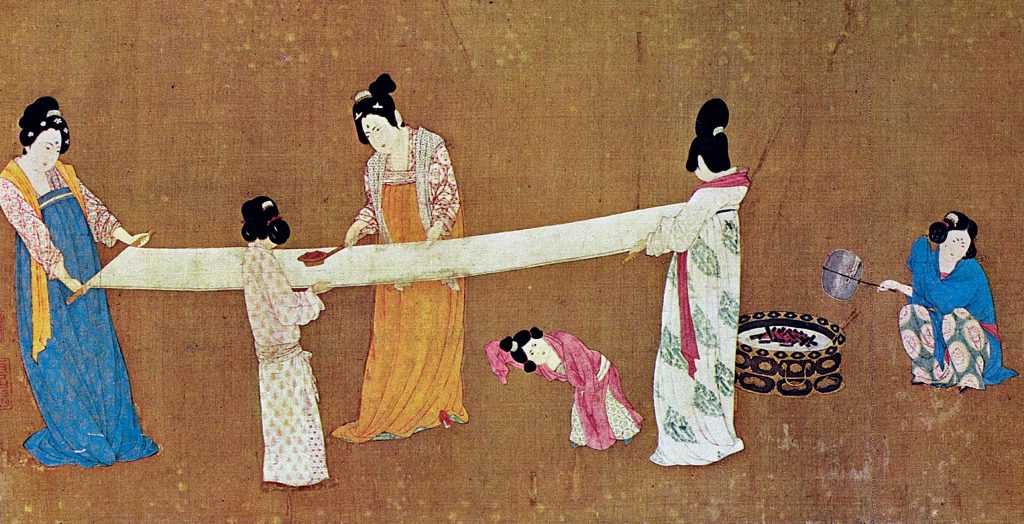
The painting above was created by the 12th-century Emperor Huizong (Song dynasty), and is believed to be a copy of an eighth-century original by the Tang-era painter Zhang Xuan. Created from ink, color, and gold applied, appropriately, on a silk canvas, “Court Ladies Preparing Newly Woven Silk” portrays the work carried out by high-ranking women. At just over 15 feet long, the painting—on display at the Museum of Fine Arts, Boston—is prized for the cleanness of its lines and the freshness and vibrancy of its colors. GRANGER COLLECTION/AGE FOTOSTOCK
Step One: Four ladies pound the silkworm cocoons with sticks in hot water to extract the fiber. Despite the physicality of their work, they are sumptuously dressed in silken attire.
Step Two: A woman winds the thread that had been pulled out from each cocoon in the previous process. She unrolls the filament from the end and rolls it onto a kind of bobbin. The lady next to her is sewing.
Step Three: A young servant, squatting on the ground, fans the embers to heat the charcoal. This will in turn heat the iron used to smooth out the rolls of silk.
Step Four: A girl plays beside four women who are engaged in unrolling the silk, holding it taut, and carefully ironing and smoothing out any wrinkles.
From there, the westward journey split into three main routes. The two northern roads passed on either side of the Heavenly Mountains (Tian Shan), whose peaks soar to heights of 24,000 feet. The third road went south and passed through Khotan (near modern-day Hotan in China), famous for silken rugs. This route skirted the edge of the almost impassable Taklimakan Desert, where extreme temperatures and sandstorms claimed the lives of many travelers.
The northern and southern roads met again near Kashgar, on the border with modern-day China and Kyrgyzstan. The traders then crossed the Pamir Mountains along narrow snowy tracks, before descending into the Fergana Valley. Somewhere near here they rested in a place the second-century Egyptian geographer Ptolemy referred to only as the “Stone Tower.”
Believed by modern historians to be the city of Taxkorgan, Ptolemy considered it the midway point of the Silk Road. Here, as in other cities along the route, merchants from all over central Asia waited to trade. These included the Sogdians, whose lands centered on the trading city of Samarqand (Uzbekistan), and who became the most prominent of the Silk Road’s middlemen between China and the West. Farther west still, the Parthians thronged the routes that passed through their lands, centered on areas of modern-day Iran, Iraq, and Turkmenistan, where the great trading city of Merv is located.
Parthian kings built caravansaries to accommodate the traders and their camels along the route to Ctesiphon (near Baghdad), their first-century B.C. capital. From here, they crossed the desert wastes of Syria via Palmyra. Having reached the Mediterranean, goods were shipped to Rome from ports such as Tyre and Antioch.
It's complicated... Rome's relationship with silk
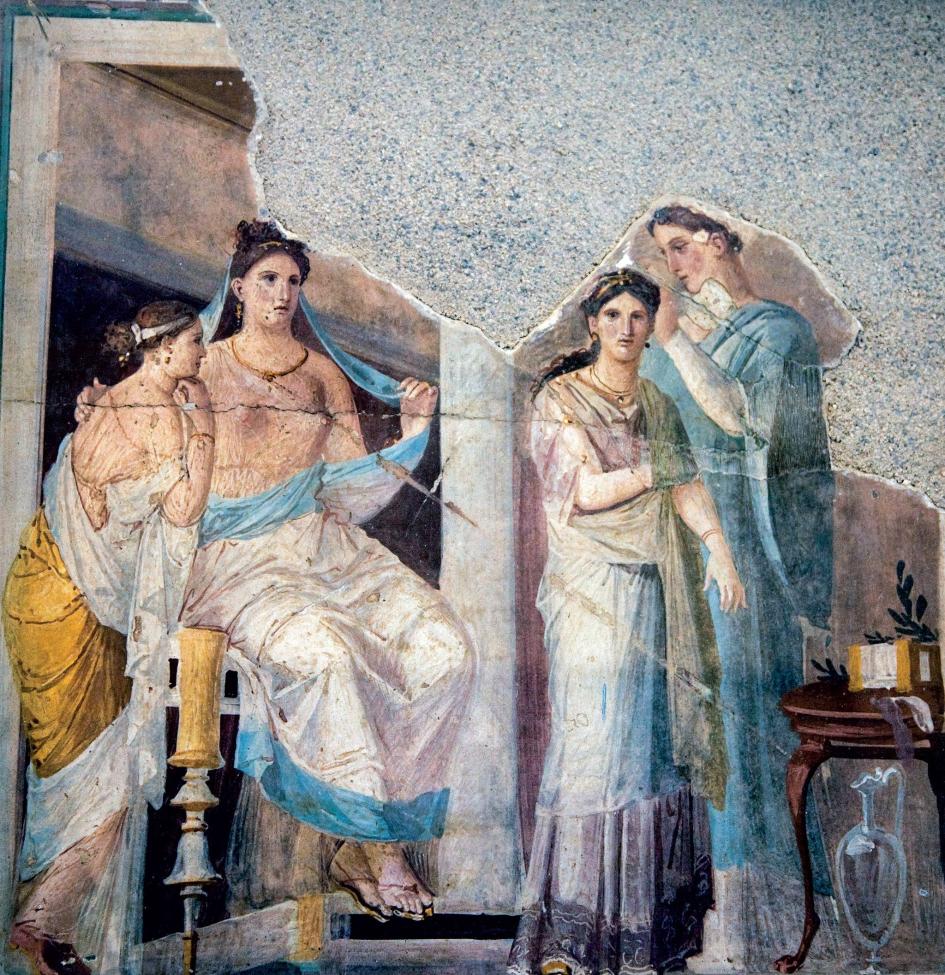
In Rome, silk was synonymous with wealth but also with vanity. Several times in Roman history, laws were passed to regulate the trade, or use, of silk. The emperor Augustus considered that the fabric encouraged immoral behavior, while Tiberius prohibited men from wearing silk clothes. The first-century writer and moralist Seneca sternly criticized Roman matrons’ taste for the exotic fabric in his book De beneficiis: “Silk dresses can barely deserve to be called dresses when they cover neither [a lady’s] body nor their shame. When they wear them, they cannot swear with good conscience that they are not naked. They are imported at vast expense . . . in order that our matrons may show as much of their persons in public as they do to their lovers in private.”
Rome itself had developed a love-hate relationship with silk. One of the earliest recorded observations occurred during a conflict with the Parthians, whose archers soundly defeated Roman troops in 53 B.C. at the Battle of Carrhae in modern-day Turkey. Before the battle, Romans made note of the Parthians’ bold, beautiful spectacle that conveyed power and invincibility as well as finesse: colorful banners woven from Chinese silk. The Roman second-century historian Florus later described the moment when the Parthian generals “displayed all around [the Romans] their standards, fluttering with . . . silken pennons” before describing how the army was slaughtered and its Roman commander killed.
Ever since the shameful rout at Carrhae, silk both troubled and delighted the Romans. A century after the battle, silk was immensely popular across the Roman Empire. This weakness for a foreign luxury was bitterly criticized by Rome’s stern moralists. In the first century Pliny the Elder wrote: “At least a hundred million sesterces flow out of our empire every year to India, China, and Arabia. That is how much luxury and women cost us!”
Monks on a mission
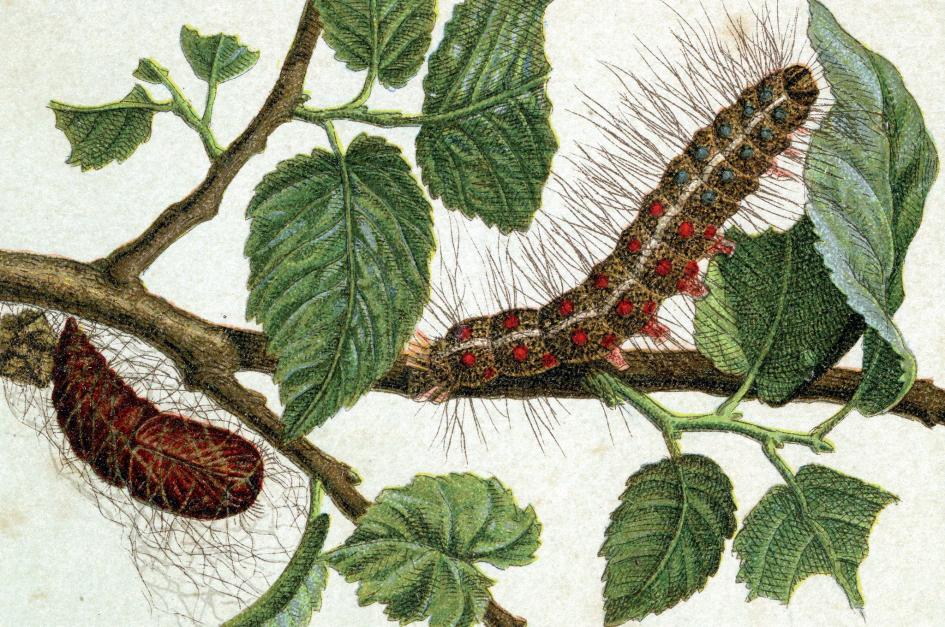
Silkworms on a mulberry bush in an illustration from 1900. KHARBINE-TAPABOR/ART ARCHIVE
The Chinese monopoly on silk production may well have been lost as early as the first century B.C., when sericultural knowledge reached Korea. It took longer, however, to arrive in the West. The disruption to trade caused by the wars between Rome and the Sasanian Empire (successors to the Parthians) led the Byzantine emperor Justinian to set up his own silk-production center. He entrusted monks to bring back silkworm eggs from China along the Silk Road. Wrapping the eggs in dung to keep them warm, the monks smuggled them out inside one of their walking sticks. According to the historian Procopius: “They carried the eggs back to Byzantium and after the worms hatched, fed them with mulberry leaves and so managed to grow silk in Roman lands.”
The Road that Changed the World
In A.D. 220 the Han dynasty collapsed, and China passed through a period of political upheaval. Over the coming centuries, the monopoly on silk that the Han had so carefully nurtured fell apart, and silk production started to spring up outside China. By the sixth century even the Romans had secured their own independent supply after the Roman emperor Justinian successfully smuggled silkworms into his empire.
Since the moment it left Chang’an, to its unpacking in the aristocratic surroundings of a Roman villa about a year later, a roll of silk would have passed through a dazzling array of cultures, languages, and climes. Even though silk production had spread to the western lands, the Silk Road continued to be a vibrant connection of cultures and trade. Not only products traveled along the Silk Road, but ideas too: convulsions in human thought and faith that reshaped the world. Buddhism, Christianity, and Islam would all travel along these paths and touch cultures along the way, shaping people’s beliefs and philosophies over time. In the seventh century, after China returned to growth and prosperity under the Tang dynasty, the route was boosted by renewed Chinese demand for luxury goods from the West, including silver-making techniques, chairs, and ceramics. In part to protect this trade, the Tang embarked on a major expansion westward, even as the first Christian missionaries were moving east along the Silk Road. At the same time, Islam was rising in the Arabian Peninsula, and during the eighth century, it spread farther and farther east along the trade routes.
In A.D. 751 Muslim Abassid troops clashed with the Chinese at the Battle of Talas. This pivotal battle, which checked China’s westward expansion, may have contributed to another, no less significant outcome: According to lore, several of the Chinese prisoners from the Battle of Talas taught their captors a craft, that disseminated through the Muslim lands into southern Europe. The skill these Chinese artisans passed on to their captors was nothing less than how to make paper, which would transform history and how it would be written.
Copyrights: National Geographic, History Magazine, article by CARLES BUENACASA PÉREZ (2017/12/01)
Original source: here
